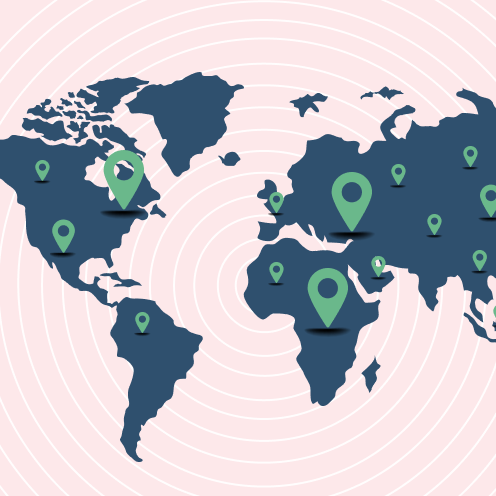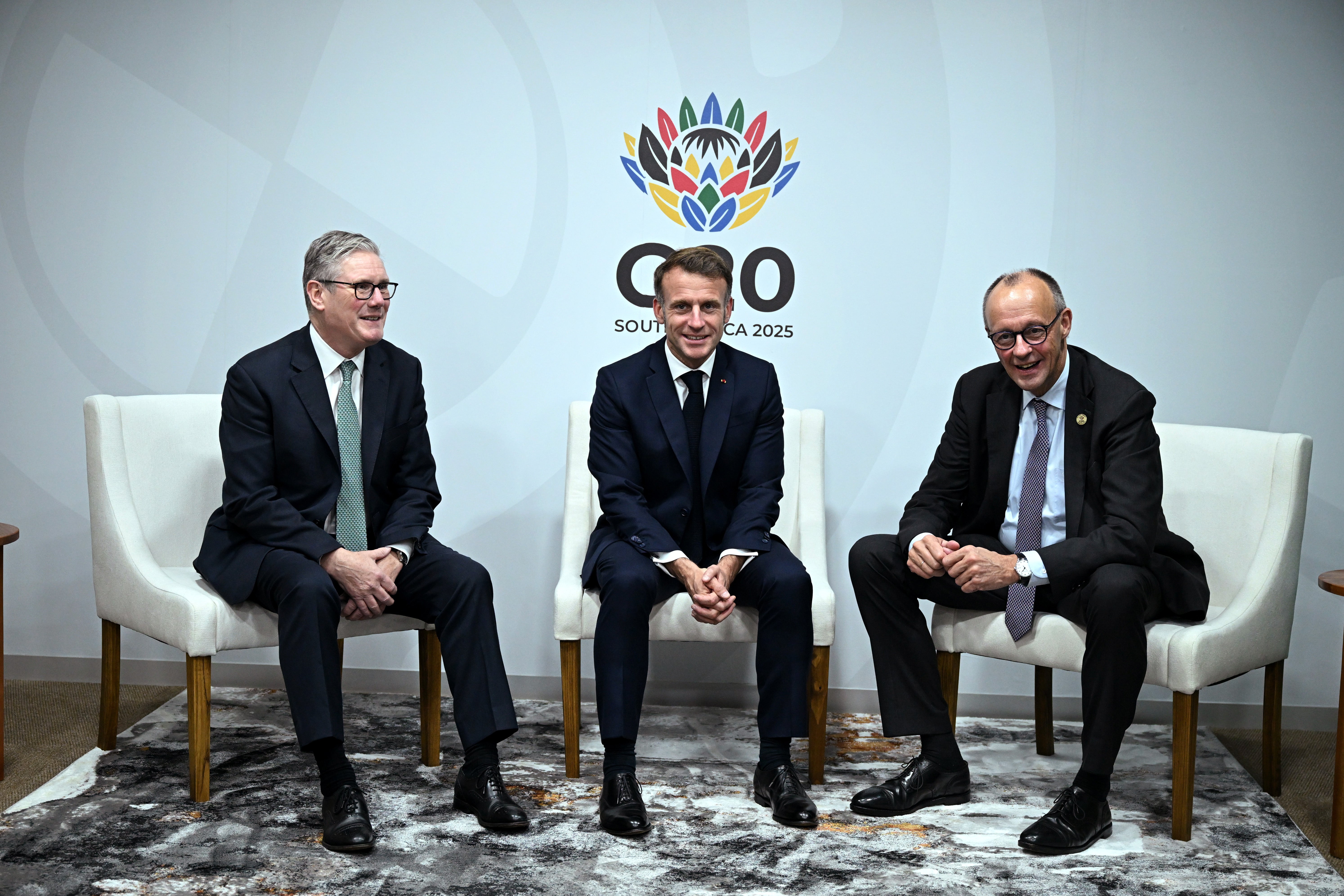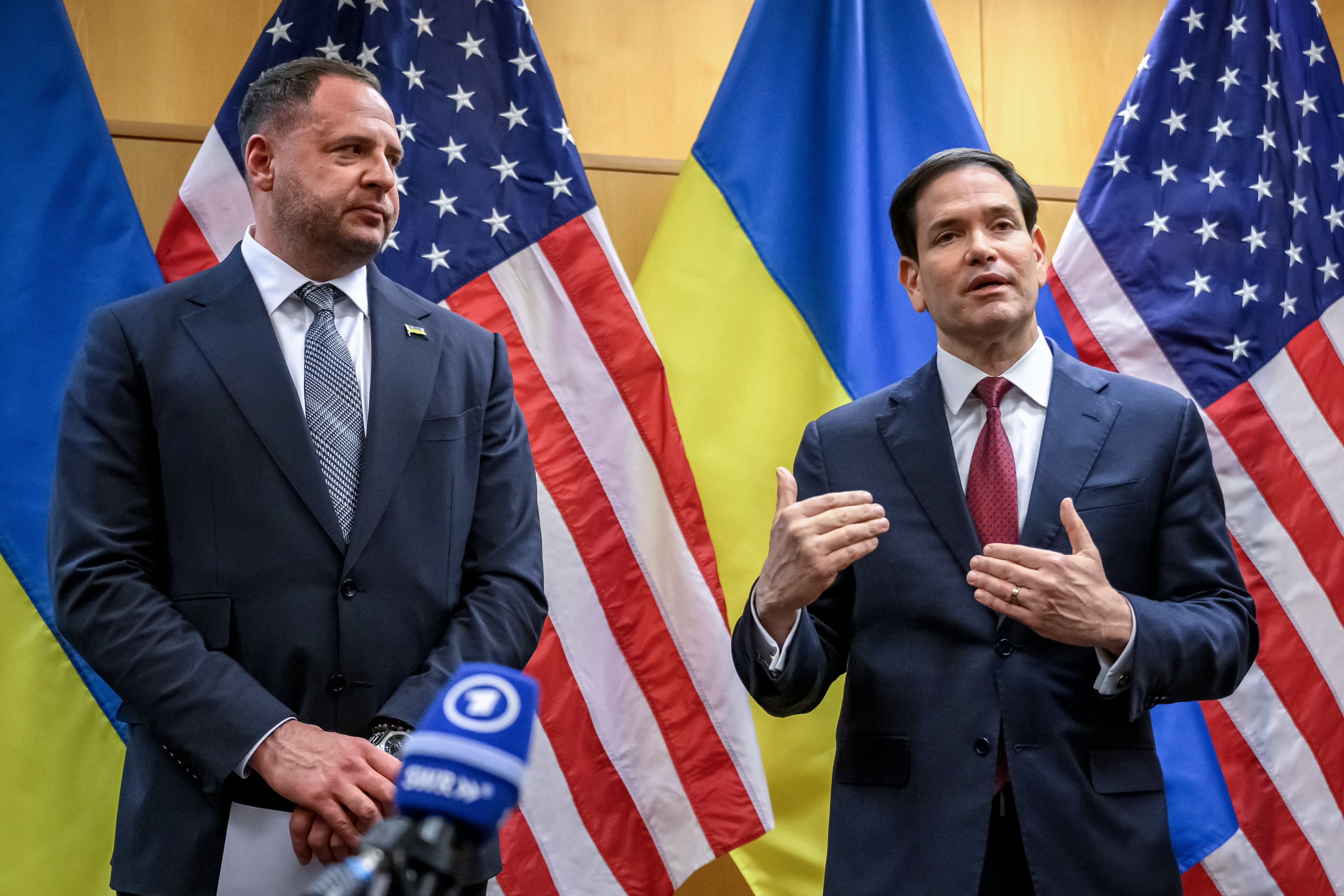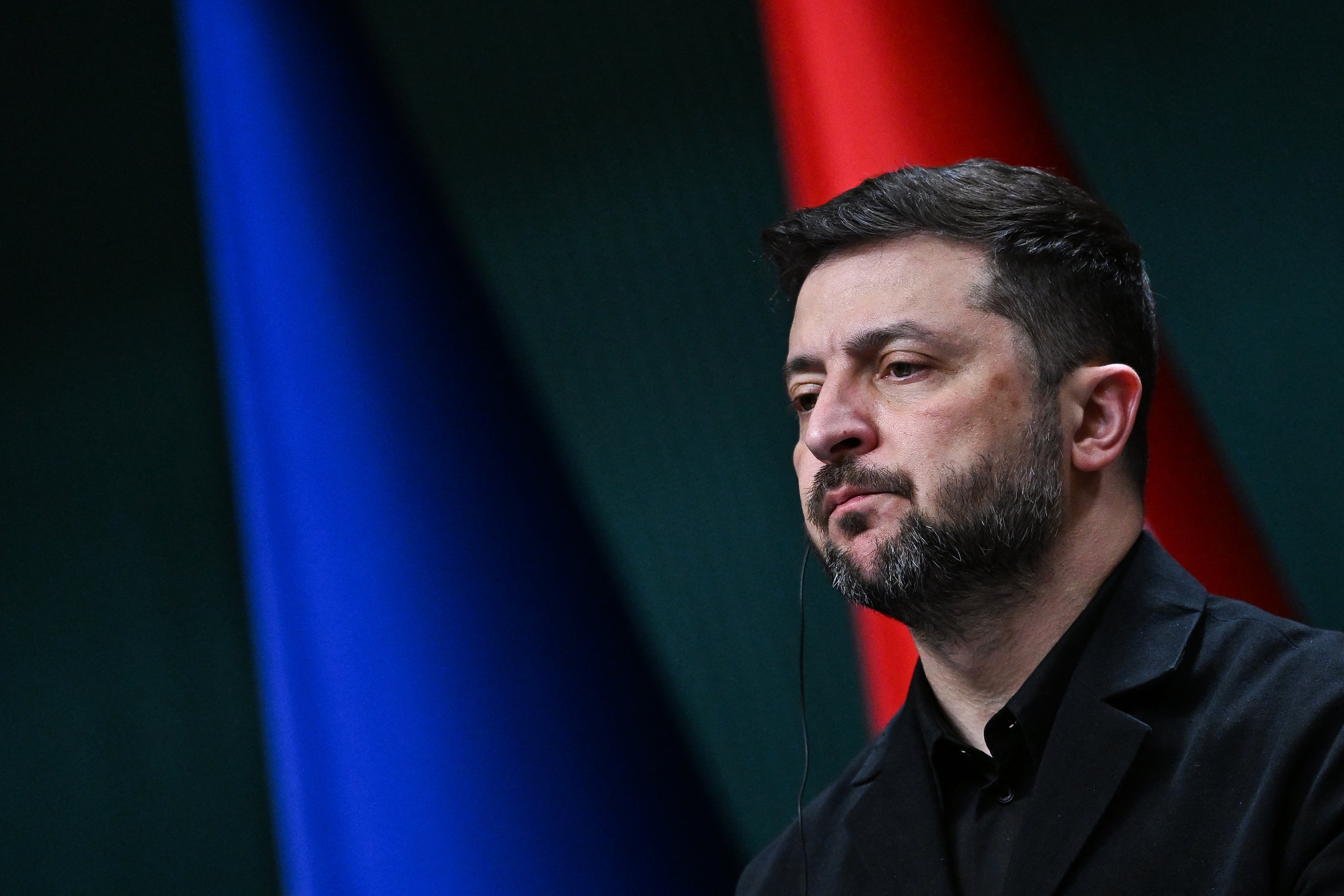- News
- World
- Europe
The West does not need America to hold its hand in the confrontation with the Kremlin - it is easily powerful enough on its own, writes world affairs editor Sam Kiley
Monday 24 November 2025 16:31 GMTComments
 CloseZelensky says Ukraine being heard by US at fast-paced negotiations in Switzerland
CloseZelensky says Ukraine being heard by US at fast-paced negotiations in Switzerland
On The Ground newsletter: Get a weekly dispatch from our international correspondents
Get a weekly dispatch from our international correspondents
Get a weekly international news dispatch
 Email*SIGN UP
Email*SIGN UPI would like to be emailed about offers, events and updates from The Independent. Read our Privacy notice
Europe is taking baby steps towards walking away from America and ending the Russian threat against its democracies. But the time has come to take giant leaps for mankind.
The first move is immediate Nato membership for Ukraine, for Georgia and for Bosnia-Herzegovina.
The idea would probably be vetoed immediately by the US, along with Hungary and Slovenia which are run by pro-Putin autocrats.
But a non-Nato, Nato-style alliance of the West would be a powerful entity that would give Putin pause for thought if it acted together and with the sort of confidence the Kremlin has shown on the world stage.
From Vladimir Putin down, Russians believe in their deepest core that ‘the West’ is their enemy.
His followers, and his flunky useful-idiot supporters in the West, further believe that Nato has advanced into the east of Europe, once dominated by the Soviet Union, by underhand means - on its march towards Moscow.
 open image in gallerySir Keir Starmer, Emmanuel Macron and German Chancellor Friedrich Merz during the G20 summit in South Africa on November 22 (PA Wire)
open image in gallerySir Keir Starmer, Emmanuel Macron and German Chancellor Friedrich Merz during the G20 summit in South Africa on November 22 (PA Wire)That is rubbish of course. Former eastern bloc nations emerged from Soviet vassalage as democratic countries and freely joined a military alliance to prevent Russia invading them again.
But Russians don’t believe that. So it doesn’t matter if Nato proves their point by bringing the frontline states with the Russian federation under its umbrella.
Doing so will also tip the balance away from an entirely Russian perspective on how to end the war in Ukraine towards what Ukraine and its European allies want.
Russia’s unprovoked invasion of Ukraine is a bare faced attempt to strip the nation of its sovereignty. It has nothing to do with protecting Russian speaking people there – we know this because most of the civilian deaths and almost all of the destruction has been committed by Russia against Russian-speaking people in Ukraine’s east.
America under Trump has shown a heavy pro-Russian bias and has also torn up the multilateralism that has helped underpin the US role as the leading nation of the free world.
But that role is fast diminishing. Lately, the G19 meeting in Johannesburg - which would have been the G20 if the US had bothered to turn up - issued a communique that boosted renewable energy, equitable mineral deals and debt relief for developing countries which Trump absolutely hates.
Meanwhile at Cop30, though weakened by Trump’s boycott of all such events, the UK, Europe and many others managed to agree to stick to addressing global efforts to meet the dangers of climate change.
 open image in galleryUS Secretary of State Marco Rubio (R) and Ukraine's Presidential Office Chief of staff Andriy Yermak hold a press conference following their closed-door talks on a US plan to end the war in Ukraine at the US Mission in Geneva, on November 23, 2025 (AFP via Getty Images)
open image in galleryUS Secretary of State Marco Rubio (R) and Ukraine's Presidential Office Chief of staff Andriy Yermak hold a press conference following their closed-door talks on a US plan to end the war in Ukraine at the US Mission in Geneva, on November 23, 2025 (AFP via Getty Images)And while the US wants to see Russia return to the G8 as a result of a peace deal in Ukraine, others are not keen. “At the moment, I cannot see that among the six members of today’s G7 who are not America, there is a willingness to readmit Russia to this group,” Friedrich Merz, the German Chancellor said.
Europe, Ukraine, Canada and other genuine allies of Kyiv are massaging and bending a weird peace proposal that may have been written in the US, but shows every sign of being a Kremlin document. They talk, as Sir Keir Starmer has, of the proposal needing “more work”.
Meanwhile a European proposal for a ceasefire, not a final peace agreement, has been circulated.
There’s no money in it for the Trump administration of his US friends, it guarantees future talks on the basis of where the front lines now are, and above all guarantees the future security of Ukraine.
The Russians tersely dismissed the plan as “completely unconstructive”, but Trump insisted the signs are hopeful. It’s not clear whether the 47th President was even aware of the Russian-American 28-point plan conceived by his son-in-law Jared Kushner and Steve Witkoff, his chief envoy.
So it is not clear if he’s behind the emerging European and Ukrainian ideas either.
Outside America, there is need and an intent to make sure Russia doesn’t leave its Ukraine adventures with any sense of a “win”. Trump has signalled that as Russia has fought hard it should keep what it has stolen so far.
But there is a powerful alternative.
 open image in galleryVolodymyr Zelensky attends a joint press conference with Turkey's President in Ankara on November 19, 2025 (AFP/Getty)
open image in galleryVolodymyr Zelensky attends a joint press conference with Turkey's President in Ankara on November 19, 2025 (AFP/Getty)The combined size of the economies of Nato nations - minus the US, Hungary and Slovenia - is over four times that of the Russian Federation. It spends 3.5-4 per cent more on defence than the Kremlin.
This bloc could muster about 3.2 million troops vs Russia’s 1.5 million.
This is a massive amount of power for an alliance to wield and far beyond anything that Russia could resist.
Finland has joined Nato to stop Russia doing a Ukraine, or Georgia, on it. Having both of those nations inside a Nato tent, or one that is very similar and has mutual defence sown into it, is a means by which the West can bolster its security without an immediate need for massive new spending.
Georgia and Ukraine have Russian forces occupying chunks of their territory. The Kremlin would think twice about moving forwards if they risked attack by the aircraft and long range missiles of the biggest, richest, and best equipped military and economic bloc on the planet.
As Europe gets its ceasefire proposal off the ground, it needs a threat that will shake Putin. A Nato-style defence pact would do that. Better still if it were quickly agreed it would put the Kremlin on the back foot.
Of course Russia can, does, and will threaten to use nuclear weapons. Let it.
Wherever they stand, neither China nor the US would be prepared to see the Kremlin use even battlefield nuclear weapons. Moscow would risk annihilation.
Europe and its allies don’t need America to see off the threat from Moscow. It has the troops, the money and the military – it just needs to show it has courage, and conviction, to step into history.
More about
NatoUkraineKremlinGeorgiaUSAmericaTrumpDonald TrumpVladimir PutinVolodymyr ZelenskyJoin our commenting forum
Join thought-provoking conversations, follow other Independent readers and see their replies
Comments



